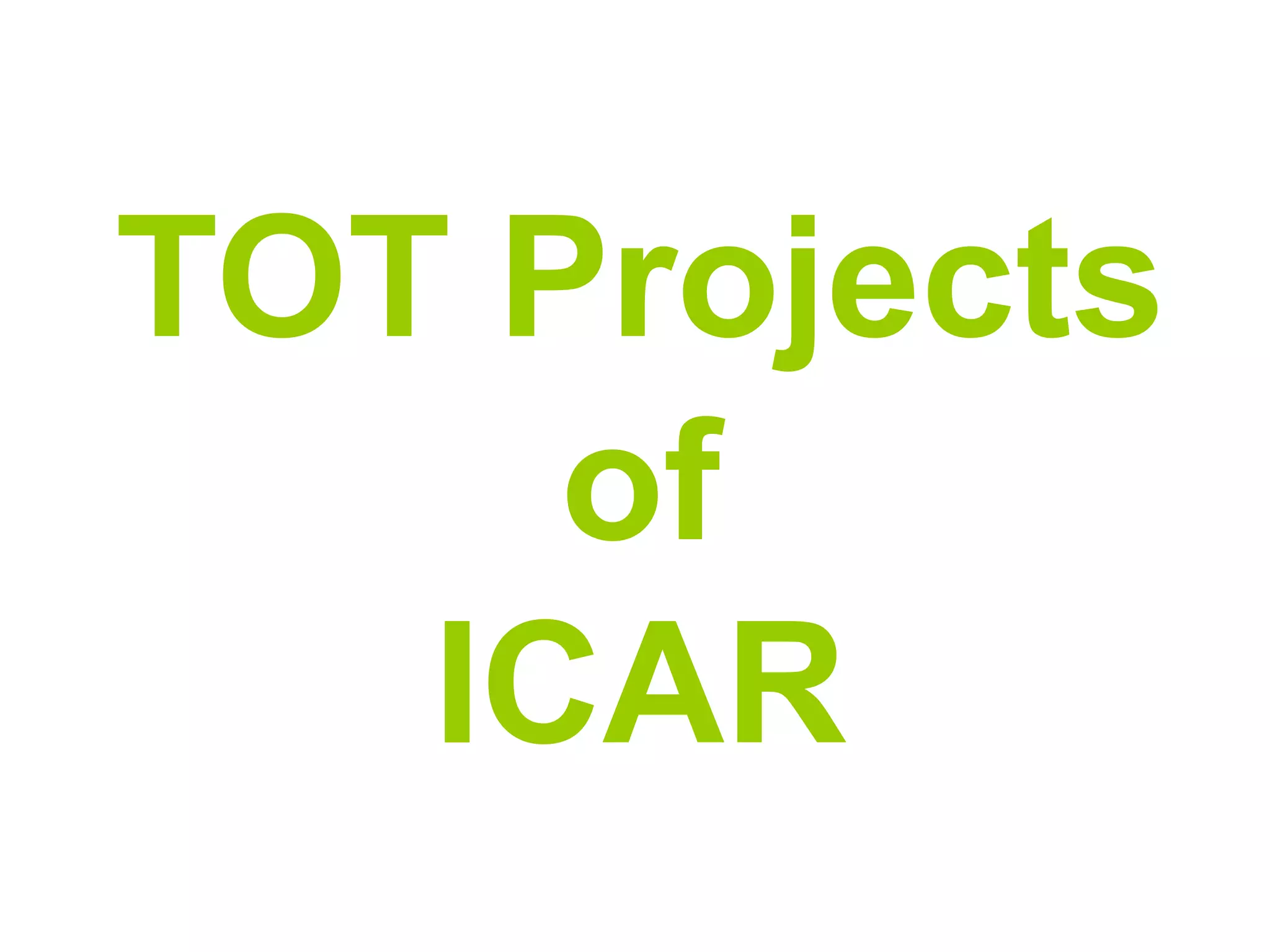This document summarizes several projects of the Indian Council of Agricultural Research (ICAR) including: National Demonstrations, Operational Research Projects, Krishi Vigyan Kendras, Lab to Land Program, Extension Education Institutes, Trainers Training Centre, Tribal Area Research Project, Land to Lab Program, and Scheduled Caste & Other Backward Caste project. It provides details on the objectives, activities, and achievements of these various programs which aim to conduct agricultural research and transfer technologies to farmers through demonstrations, training programs, and institution-village linkage programs.































